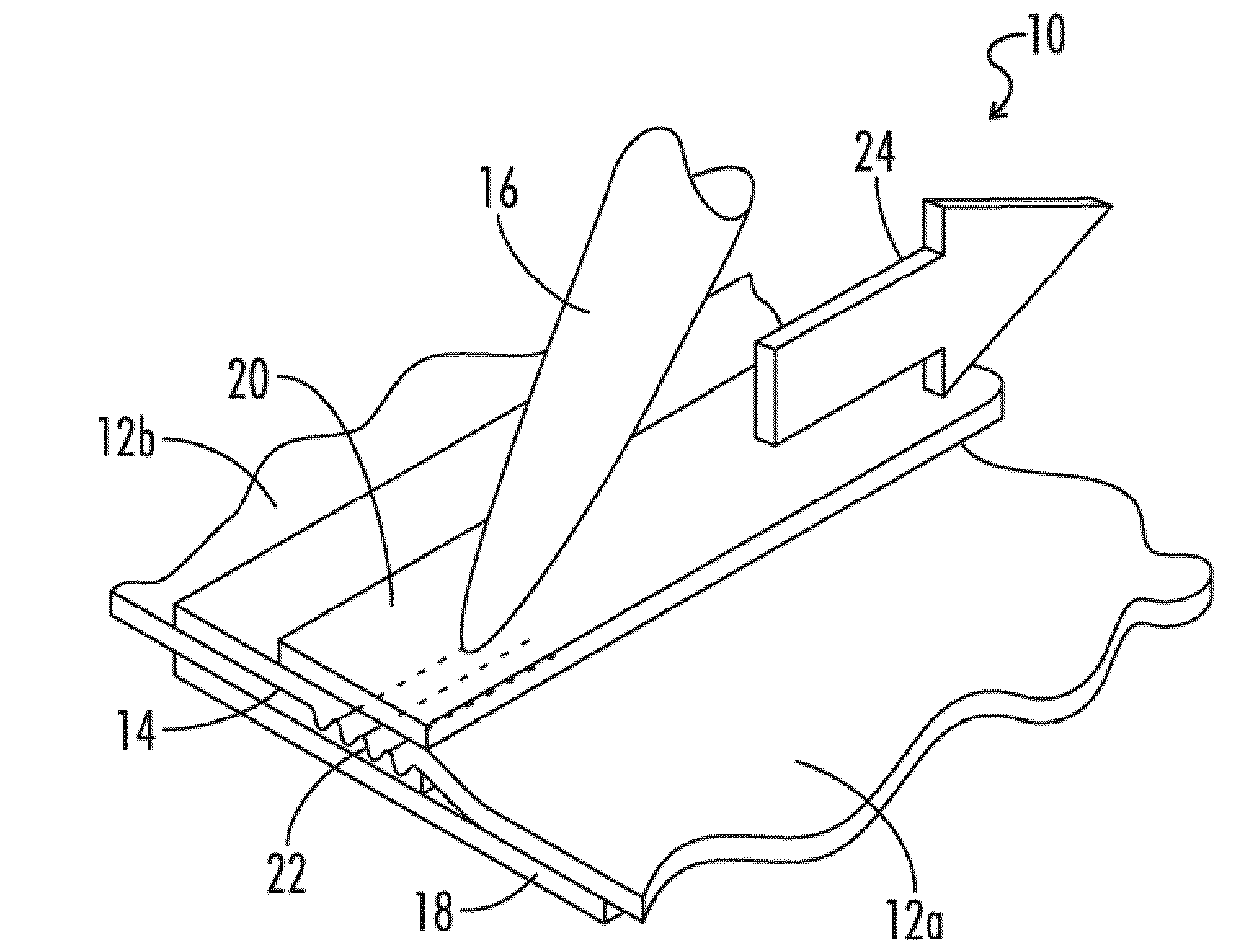Polymer seaming with diffusion welds
a technology of diffusion welds and polymer films, applied in the field of polymer films, can solve the problems of ineffective melt welding in joining separate pieces, prone to mechanical tears, rips, other damages, and easy mechanical tear and contamination of thin sheets, so as to prevent thermal deformation, reduce the propagation of tear, and increase the modulus of adhesives
- Summary
- Abstract
- Description
- Claims
- Application Information
AI Technical Summary
Benefits of technology
Problems solved by technology
Method used
Image
Examples
working examples
[0053]Specific working examples are provided below to further clarify specific embodiments of the current invention.
example 1
[0054]Spot diffusion welds were produced in an overlapping seam between a 2 mil thick polyimide film associated with the trademark KAPTON HN and another 2 mil thick polyimide film associated with the trademark KAPTON HN. The overlapping seam was held in place by magnets placed above and below the seam such that the magnets were drawn towards each other. A backing was positioned under the seam such that the plunger presses the seam directly into the backing. The backing was formed of a 1 / 1000 inch thick KAPTON tape secured with a silicon pressure sensitive adhesive to a 1 / 16 inch thick ceramic wick. The 1 / 16 inch ceramic wick was positioned over a ⅛ inch thick nylon sheet, which was positioned over a rubber foam.
[0055]A plurality of heated plungers was pressed into the polyimide material at the seam, such that the polyimide seam was positioned directly between the heated plungers and the backing. The heated plungers had a tip with a 0.145 inch diameter circle, and the tip was heated ...
example 2
[0056]Spot diffusion welds were produced in an overlapping seam between a 2 mil thick polyimide film associated with the trademark KAPTON E and another 2 mil thick polyimide film associated with the trademark KAPTON E. The same process and parameters as described for Example 1 was used in Example 2.
PUM
| Property | Measurement | Unit |
|---|---|---|
| thick | aaaaa | aaaaa |
| thickness | aaaaa | aaaaa |
| thickness | aaaaa | aaaaa |
Abstract
Description
Claims
Application Information
 Login to View More
Login to View More - R&D
- Intellectual Property
- Life Sciences
- Materials
- Tech Scout
- Unparalleled Data Quality
- Higher Quality Content
- 60% Fewer Hallucinations
Browse by: Latest US Patents, China's latest patents, Technical Efficacy Thesaurus, Application Domain, Technology Topic, Popular Technical Reports.
© 2025 PatSnap. All rights reserved.Legal|Privacy policy|Modern Slavery Act Transparency Statement|Sitemap|About US| Contact US: help@patsnap.com



